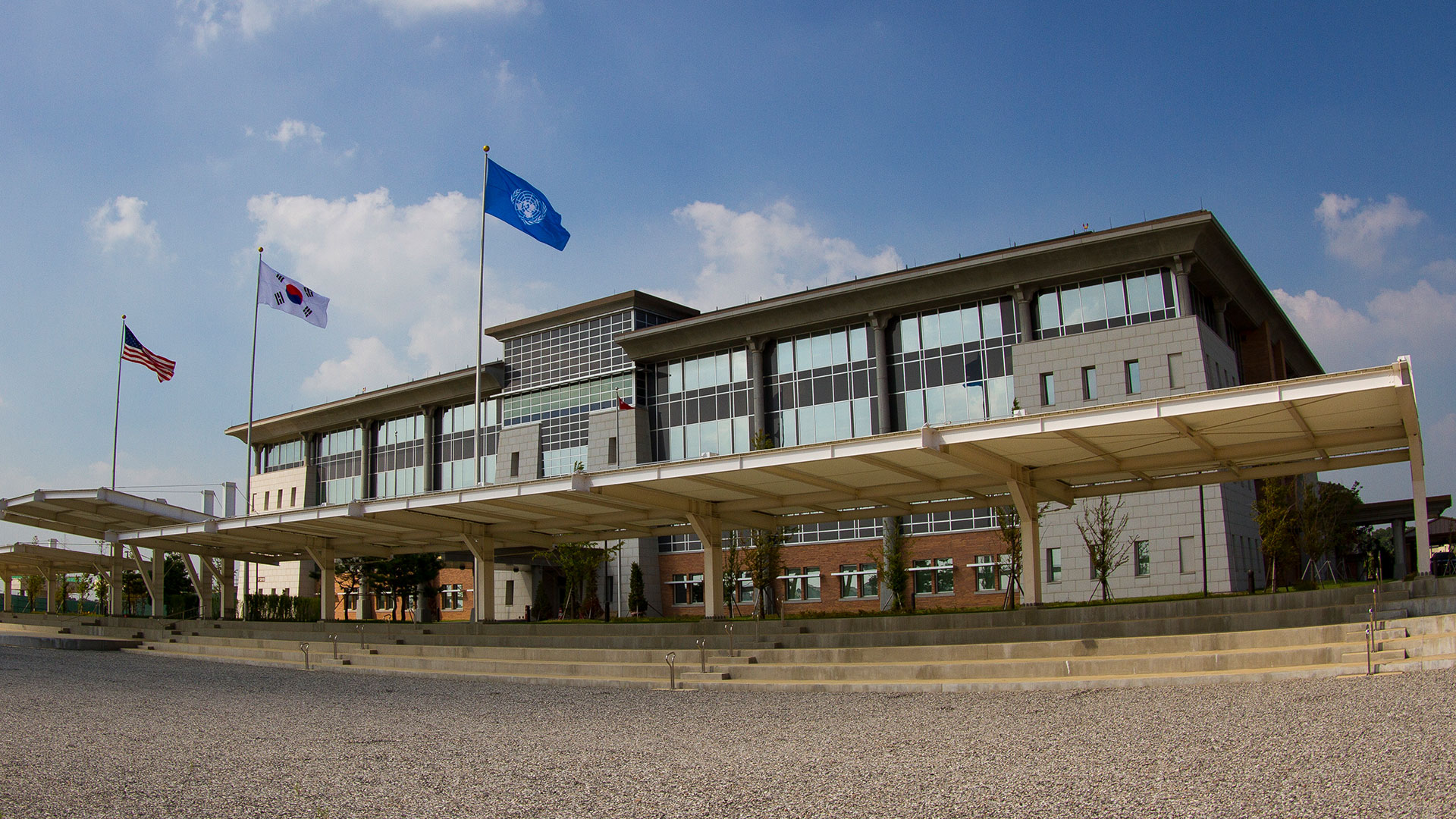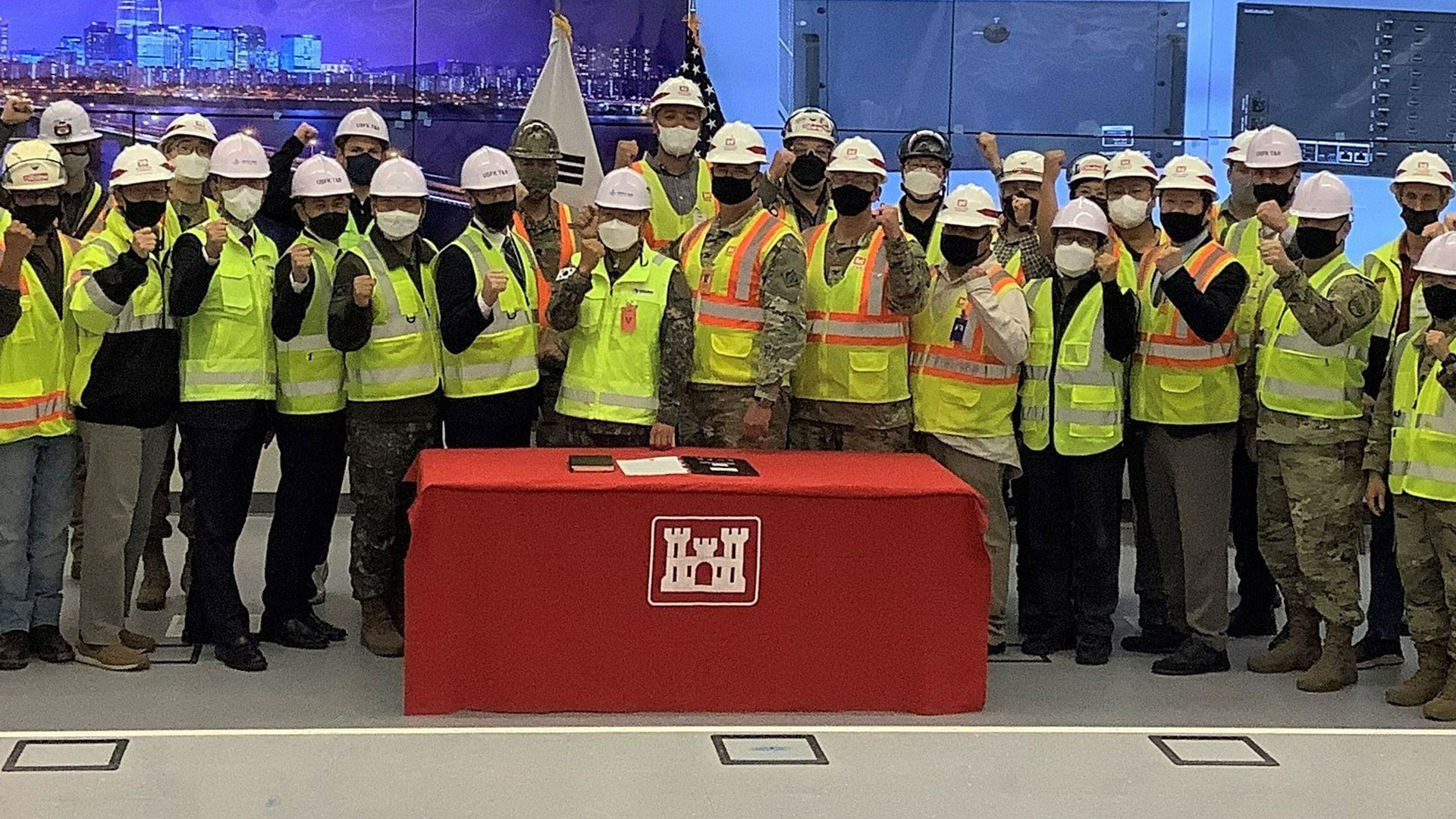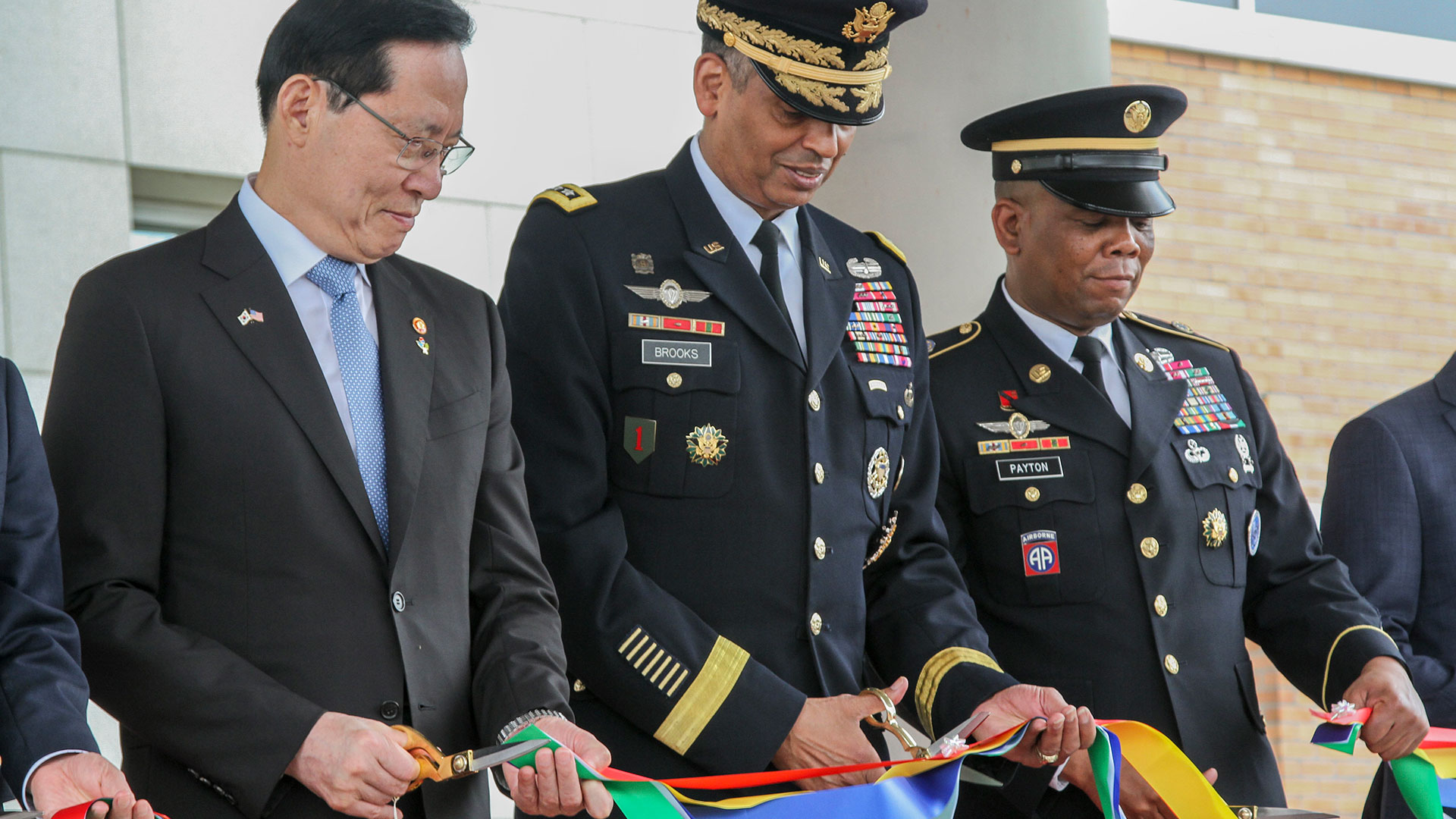

Transforming Defense: Unprecedented Army Relocation Achieved Through Network Modernization
CACI Case Study
Whether moving from Los Angeles to New York, or just the other side of town, packing up everything one owns into a moving truck or a shipping container is no easy feat. A precious toy is usually lost, something always breaks, and an important cord usually disappears into the void.
Moving is a difficult enough task for most people to face. Almost 10 years ago, the U.S. Army tasked CACI with executing the largest base move and relocation in the Army’s history, the Yongsan Relocation Plan (YRP) based out of South Korea.
Under the YRP, the assets and capabilities of the United Nations Command and U.S. Forces Korea (USFK) were relocated from facilities throughout the Korean peninsula to a single, consolidated location on Camp Humphreys, the largest international U.S. military installation in the world, located on the western coast near Pyeongtaek, South Korea.
This consolidation represented not only a reallocation of resources and capabilities but also a major shift in the U.S.’s alliance with South Korea, establishing new warfighting capabilities and improving South Korean defense capabilities.
70+ systems
65+ military units
40+ military installations
Voice and data capabilities
installed in more than
300 new buildings
~28,500
troops restationed
Infrastructure and Operations Relocation
Under the YRP, many of the 28,500 troops stationed across Korea would be redeployed to Camp Humphreys and U.S. Army Garrison Daegu. Troops were previously spread across the country, with resources and capabilities similarly distributed across Korea. By relocating to Camp Humphreys, soldiers would be in a less congested part of the country and IT resources and infrastructure would be centralized.
But construction on the Camp Humphreys expansion was delayed and the prime contractor for Phase 1 of the expansion eventually lost the work, so CACI stepped in to deliver follow-on phases. CACI was contracted to begin designing, developing, and installing an entirely new IT infrastructure to support strategic and operations plans in South Korea. The Army needed everything from VoIP capabilities to command and control (C2) functions and enterprise help desks.

“This was a unique problem that required a highly customized solution. The Army isn’t closing a base every day of the week; it requires a lot more than a U-Haul and a few buddies.”
David Wilson
CACI Vice President
Accelerated Integration of Network Modernization
Our team has a tenured experience and deep relationship with the customer, which enabled us to set realistic guidelines, provide guidance to the engineers, and allocate necessary resources appropriately and rapidly. Even with construction delays, we met anticipated deadlines earlier than previously planned and even brought costs well under original budget through efficient use of matrixed resources.
“Construction delays and other problems threw a lot of scheduling issues our way, but we flexed and responded appropriately; it was really impressive,” Wilson said.
CACI and its team successfully deployed communications and network capabilities for the 28,500 users stationed across South Korea, complete with an underlying IP network, software deployment, user education, and training for IT support staff. In subsequent program phases, CACI also installed command and communications centers for country-wide operations, a classified and unclassified virtual data center environment, and logistics and tracking operations.
“This was a tremendous execution in network modernization and transformation,” Wilson said. “We had to migrate existing services, build out new ones, and do it all without impacting current operations for the thousands stationed there. Something usually breaks or malfunctions during moves of this magnitude, but we absolutely avoided that.”

USFK's finished relocation of their forward headquarters at Camp Humphreys. (U.S. Army photo by Specialist Adeline Witherspoon)

The U.S. Army Corp of Engineers Far East District commemorates the completion of Command Center Humphreys with an Acceptance Release Letter ceremony at USAG Humphreys, Republic of Korea.

Republic of Korea Minister of National Defense Song Young-Moo, left, U.S. Army Gen Vincent K. Brooks, United Nations Command (UNC), Combined Forces Command, U.S. Forces Korea (USFK) commander, and Command Sgt. Maj. Steven L. Payton cut the celebratory ribbon to signify the relocation and opening of the USFK Headquarters building at U.S. Army Garrison Humphreys, South Korea.
![]()
Turnkey support throughout migration and modernization
![]()
Migrated optical transport to Multiprotocol label switching, voice capabilities to VoIP
![]()
Integrated computing, storage, and virtualization of servers
Maintaining Sustainable Network Management
Base closures of this scale are uncommon, but the consolidations and creation of joint bases are more commonplace, introducing similar challenges to those addressed in the YRP.
“You see more joint bases now than before, and with that, old infrastructure needs to be taken down or removed. Modernizing networks and IT infrastructure is a pretty common task now and it’s something that, based on our performance in Korea, our team is well-equipped to tackle,” Wilson said.
According to Wilson, the methodologies and strategies used in the YRP have broad application to multiple network modernization demands. Our experts in network modernization, cybersecurity, data management, and data transport systems can easily identify deficiencies during system relocations and provide recommendations for future action to the government.
